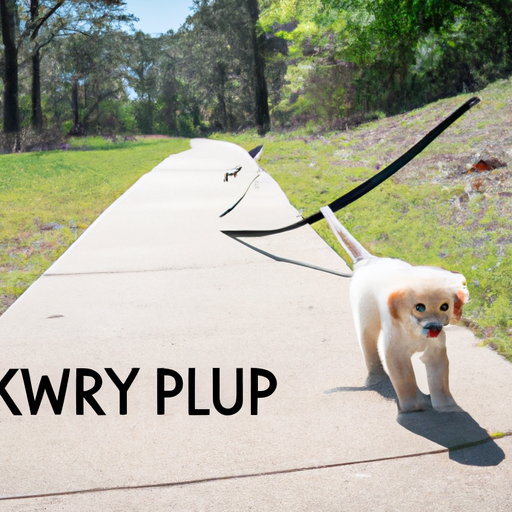Walking a puppy might seem like a simple task, but it’s much more than just a casual stroll around the block. It’s a fun and healthy way to bond with your furry friend and teach them good behavior. As a caregiver, you’ll want to know the ins and outs of puppy walking to ensure your pet’s safety and enjoyment. This guide will provide you with the necessary knowledge and tools to make your puppy walks a success.
H2 1- Understanding Your Puppy’s Needs
Every breed of puppy has its own unique set of needs when it comes to exercise and outdoor time. It’s essential to understand these needs to ensure your puppy is getting the right amount of exercise.
- Small Breeds: Small breeds generally require less exercise. A short walk or playtime in the yard might be enough.
- Medium Breeds: Medium breeds usually need a moderate amount of exercise. A walk and some playtime should suffice.
- Large Breeds: Large breeds tend to have a lot of energy and may require several walks and play sessions each day.
H2 2- The Importance of Leash Training
Leash training is a crucial part of any puppy’s development. It ensures their safety and allows you to maintain control during your walks.
- Start by getting your puppy used to wearing a collar and leash around the house.
- Once they’re comfortable, try taking them for a short walk in a quiet, familiar area.
- Gradually increase the length and complexity of your walks as your puppy becomes more confident.
H2 3- Choosing the Right Equipment
The right equipment can make a world of difference in your puppy walks. Consider the following when making your selection:
- Collar: Choose a collar that is comfortable and fits well. It should be snug, but not too tight.
- Leash: A sturdy, retractable leash is a good option for most puppies.
- Harness: For puppies that tend to pull, a harness can provide better control.
H2 4- Planning Your Walks
Planning your walks can help ensure they’re enjoyable and beneficial for your puppy. Consider the following factors:
- Time of Day: Early morning and late evening walks can be less stressful, as temperatures are cooler and there are fewer distractions.
- Route: Varying your route can help keep things interesting for your puppy.
- Duration: Most puppies need at least 30 minutes to an hour of exercise each day, split into several walks.
H2 5- Socializing Your Puppy
Socializing is an essential part of a puppy’s development. It can help them become more confident and well-behaved.
- Allow your puppy to meet other dogs and people during your walks.
- Always keep your puppy on a leash during these interactions.
- Reward your puppy for positive interactions with treats or praise.
H2 6- Health Considerations
Walking is great exercise for your puppy, but there are some health considerations to keep in mind.
- Vaccinations: Ensure your puppy is up-to-date on vaccinations before taking them to public places.
- Paw Care: Check your puppy’s paws regularly for cuts or soreness. Avoid hot pavement that can burn their pads.
- Hydration: Always bring water for both you and your puppy.
H2 7- Dealing with Behavioral Issues
Even with the best planning, puppies can sometimes exhibit behavioral issues during walks. Here are some common problems and solutions:
| Issue | Solution |
|---|---|
| Pulling on the leash | Use a harness and reward calm behavior |
| Barking at other dogs | Distract your puppy with treats or toys |
| Refusing to walk | Try changing the route or time of day |
H2 8- FAQ
Q: How often should I walk my puppy?
A: Most puppies need at least 30 minutes to an hour of exercise each day, split into several walks.
Q: What should I bring on a puppy walk?
A: Always bring a sturdy leash, poop bags, and water for both you and your puppy.
Q: How can I get my puppy to stop pulling on the leash?
A: Try using a harness and reward calm behavior with treats or praise.
Walking a puppy can be a rewarding experience for both of you, with the right knowledge and preparation. Remember, patience and consistency are key. Happy walking!



